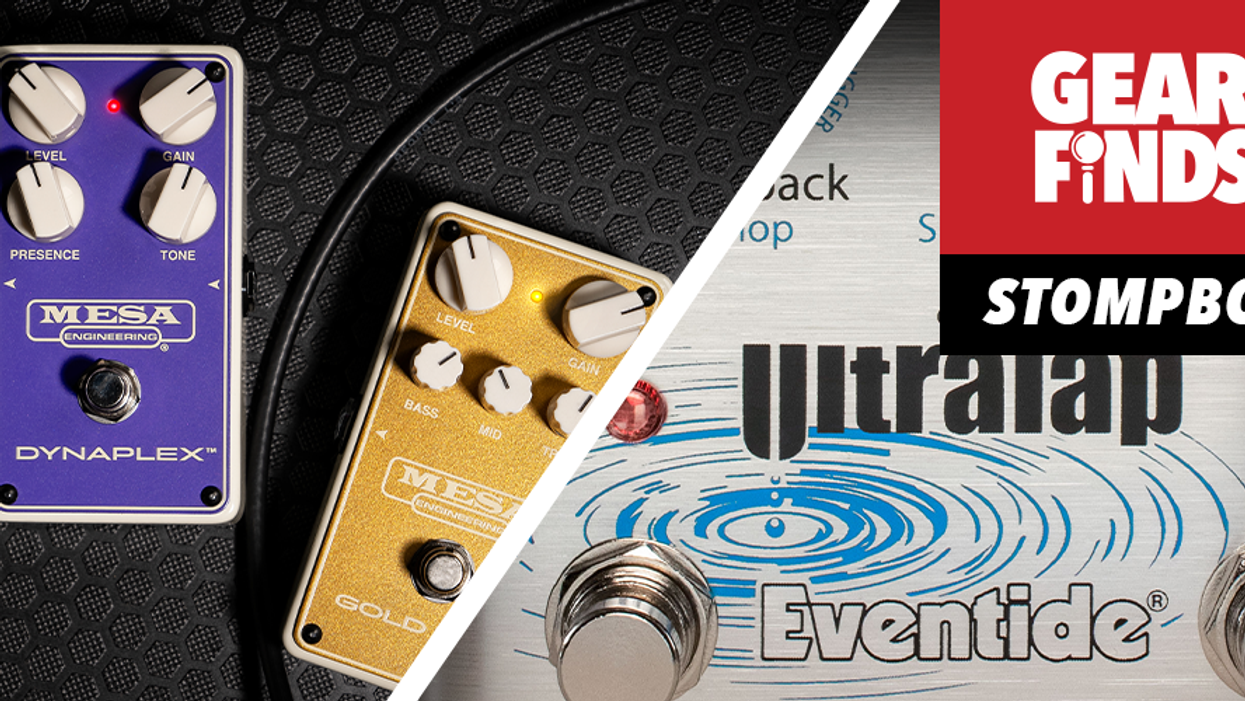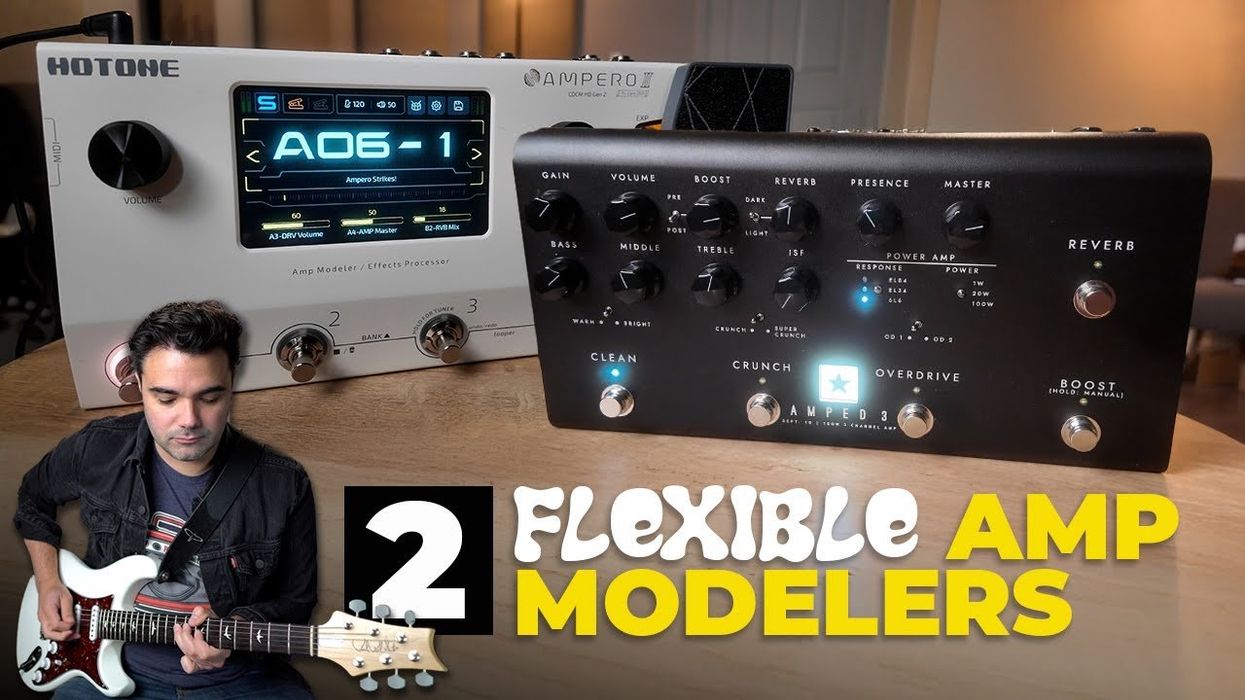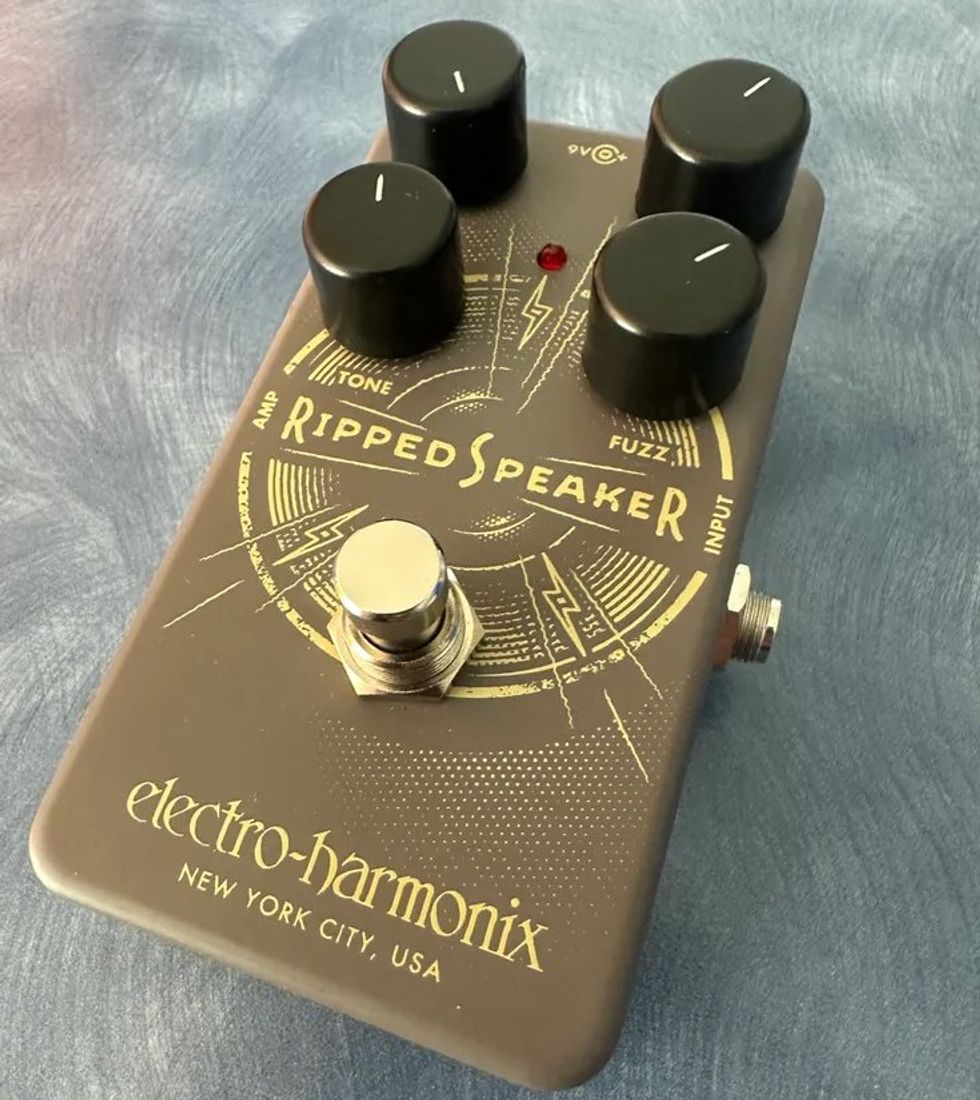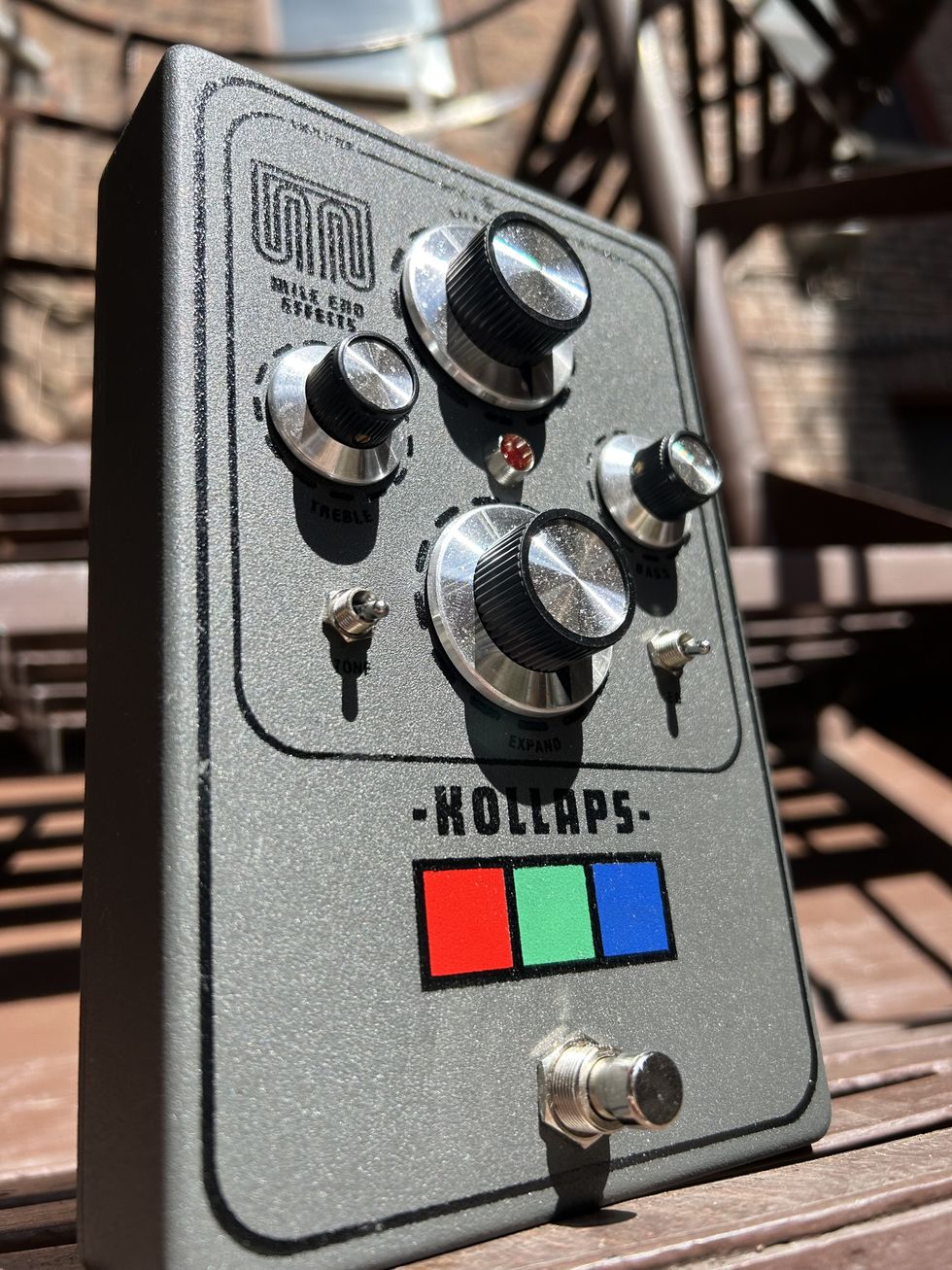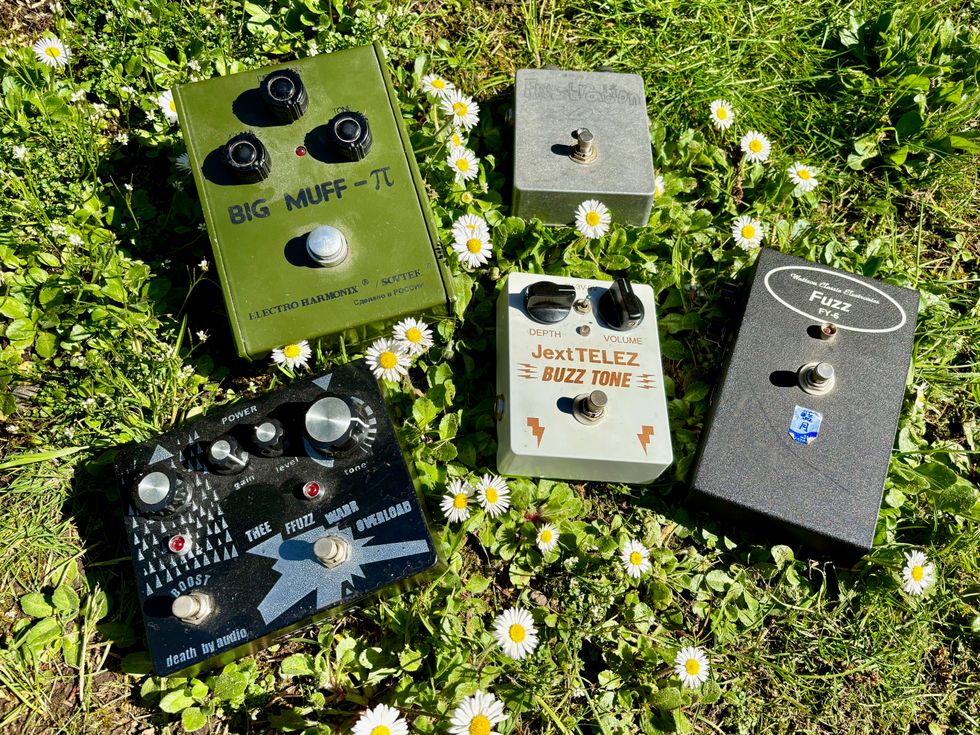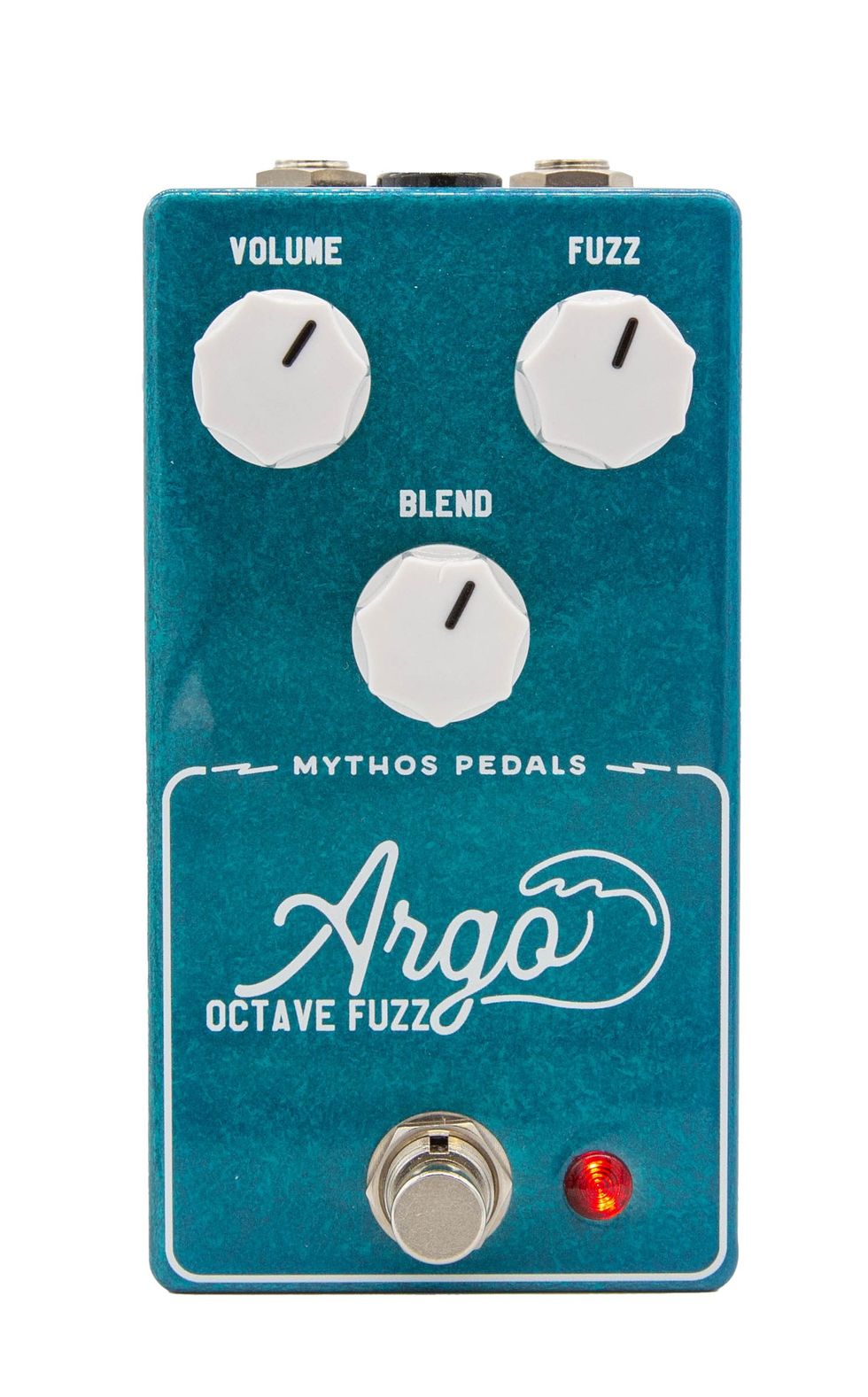Clip 1 - Fingerstyle
Clip 2 - Wren and Cuff Pickle Pie Bass distortion placed after wah, no EQ.
Dunlop didn’t invent the wah, but they’re one of the most prominent names in the history of wah making. And even though he probably wasn’t the first to use a wah on bass, what’s one of the first names that come to mind when you think about the pioneers of bass wah?
Geezer Butler, of course! So, it’s only fitting that Dunlop turned to Butler for the company’s first signature bass wah. Dunlop has been offering a bass wah for years, but this new model is definitely a different animal.
Foot of Doom
This sturdy pedal feels ready to take on just about any physical abuse. The wah control feels exceptionally solid and smooth. The pedal is a very rock ’n’ roll-looking matte black with Geezer’s name in purple rubber over a grey lightning bolt on the tread. The wah is simple with no external controls, other than the treadle itself.
This is a good thing—especially if you use a lot of pedals in your rig. I’m generally a fan of less-is-more, since it minimizes the chance for things to go wrong, like, “How come when I stepped on my wah for my big bass solo, my volume cut in half?” You want to concentrate on music—not if a level control got bumped somewhere in your setup. Thumbs up for less controls!
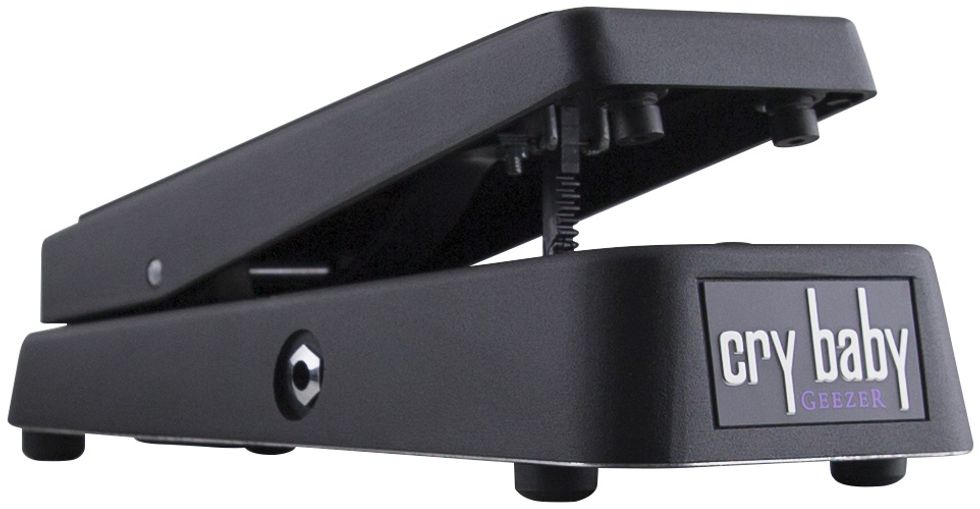
If adjustments are needed, the wah houses a pair of little trim pots inside, which are easily accessed by removing the bottom plate that’s attached via four screws. Adjustments can be made for Q (aka bandwidth) and the auto-return’s delay time. The Geezer version has the same auto-return rocker treadle as Dunlop’s standard bass wah, which means it springs back to the heel-down/bypass position when you remove your foot.
As you start to tip the rocker forward with your toe, it engages the effect. The auto-return delay control allows you to set how long—if at all—you want the effect to remain on after it’s returned to the heel-down position. The pedal is powered by either a standard 9V battery or AC adapter.
Ratings
Pros:Solid construction. Aggressive, cutting tone. Simple, easy-to-use features. Auto-return rocker.
Cons:
Could be too prominent in some situations. Cuts low end to a degree.
Tones:
Ease of Use:
Build/Design:
Value:
Street:
$169
Dunlop Geezer Butler Cry Baby Wah
jimdunlop.com
Wah Pigs
I was naturally compelled to compare the Geezer model to Dunlop’s standard Cry Baby Bass Wah, so I plugged both, side by side, into my vintage Guild Thunderbass powering an Ampeg 2x10 cab, grabbed my ’65 P, and dove into wah-bass wackiness! The difference between the two pedals was immediately clear. To my ears, the Geezer is much more aggressive and, well, “wah” like, whereas the original sounds more filter-like and leaves more low end intact through the whole sweep. I feel like the Geezer is more suited to prominent, step-out-front featured parts, whereas the original feels like something a player would use in more of a traditional bass role. The Geezer wah could pretty easily get out of control in the upper midrange, with those frequencies really jumping out, and it did veer towards the duck-quack world. This, however, can often easily be remedied by putting a distortion after the pedal.
So why not plug one in? I chose my Wren and Cuff Pickle Pie Hella Fuzz, which is a Big Muff clone. As predicted, this tamed the quack to an extent, but even with a pretty scooped-sounding fuzz, the duck was sticking its beak out at times. And this is where the wah’s Q control comes in. The pedal comes with the Q knob positioned to Geezer’s preferred setting, which is where I left it for initial testing. But I found that dialing the Q knob all the way down resulted in a much more usable and pleasing result. It really tamed those over-the-top mids, and for this bassist, that means it is usable in more scenarios. Kudos for including the Q control! It should also be mentioned that when the pedal was bypassed it didn’t seem to affect my tone in any way. And that’s something I’m always on the lookout for.
The Verdict
The Geezer Butler Cry Baby is built tough enough to tour the world with Sabbath (literally) and good looking enough to be seen doing it. I appreciate the Q control and its ability to adjust how drastic the pedal is, and I’m glad they tucked the control inside. When you get your sound dialed in, it stays that way. For average utilitarian bass duties, this pedal could get a bit overly conspicuous, but if you’re looking for an aggressive, biting wah that will make your bass jump out of the mix for featured parts, the Geezer Butler Cry Baby Wah may have your name on it, too. And if you use a very scooped midrange in your sound and/or use a lot of distortion, this pedal is a great option.
Watch the Review Demo:


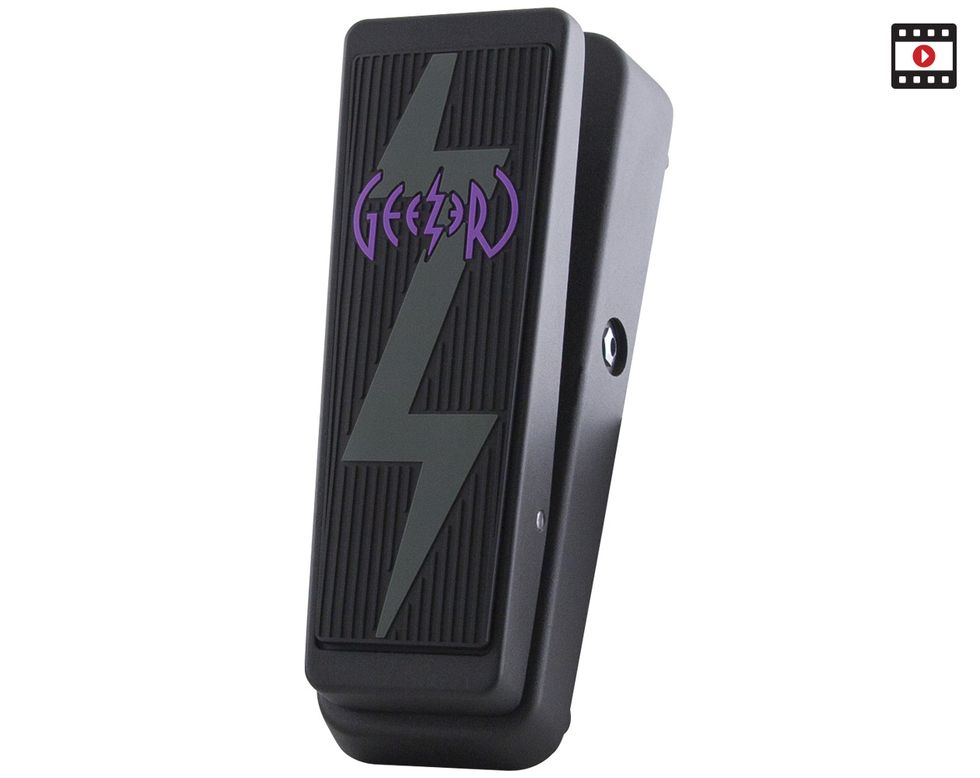

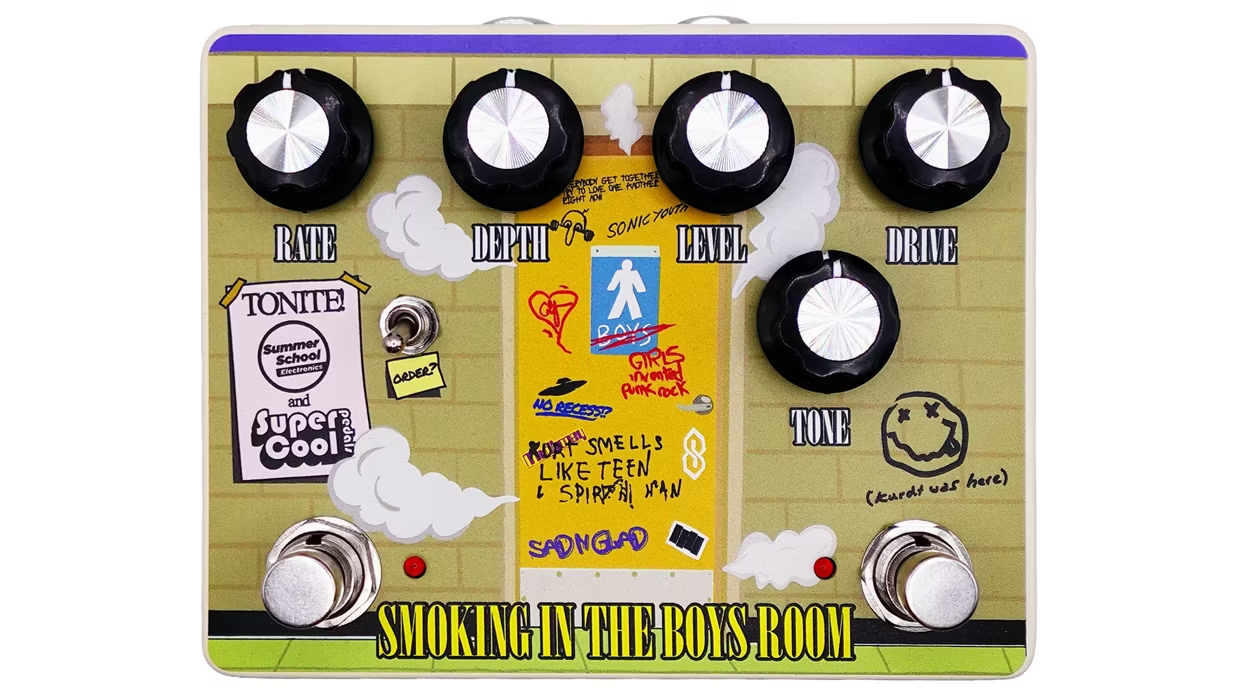




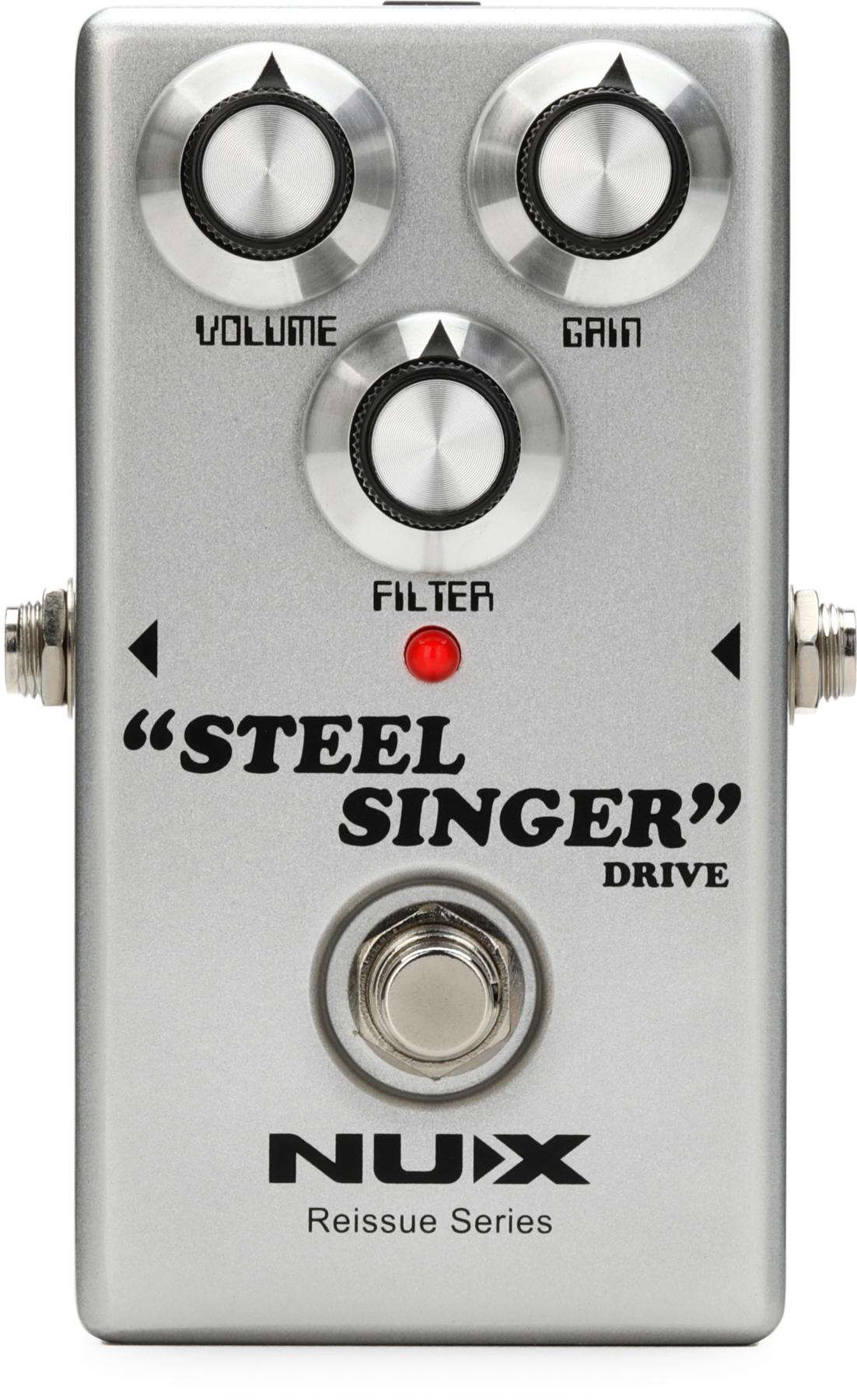


![Rig Rundown: Russian Circles’ Mike Sullivan [2025]](https://www.premierguitar.com/media-library/youtube.jpg?id=62303631&width=1245&height=700&quality=70&coordinates=0%2C0%2C0%2C0)


